Did you know that expertly tuned motorcycle engines can deliver up to 15% more horsepower and boost fuel efficiency ? That’s not just a promise for racers—it’s a real advantage every rider can experience. Motorcycle engine tuning isn’t just for gearheads and professionals. By understanding the best tuning techniques, you can transform your riding, whether you’re hitting the streets, tackling the track, or seeking adventure. Dive in to learn the trade secrets that separate a good ride from a phenomenal one—and discover how simple adjustments can unlock your bike’s true potential.
Unlocking Motorcycle Engine Tuning: Why Proper Tuning Transforms Performance
Motorcycle engine tuning is the foundation for maximizing a bike’s potential. Whether you’re chasing more horsepower, smoother throttle response, or enhanced fuel efficiency, tuning plays a pivotal role. The main keyword— motorcycle engine tuning —is your ticket to transforming the riding experience. Proper tuning impacts everything: the fuel ratio , ignition timing , and engine parameters are meticulously balanced to ensure optimal results . Simple changes, like tuning the air filter for better airflow, make the engine run smoother while producing more power output . For example, a motorcycle set up for the track often requires a different tuning approach than one intended for daily commuting. In both scenarios, the focus on critical elements—like the air mixture , spark plugs , or ride-by-wire adjustments—directly translates to better fuel economy and fewer risks of engine damage .
Motorcycle tuning isn’t just about squeezing out more speed. It’s about tailoring your ride to fit your goals, whether for life in the fast lane or longevity and reliability. By exploring professional tuning techniques and the tuning process , you gain full control over your machine’s personality—and uncover a sense of connection that every passionate rider craves. Now, let’s break down what you’ll learn in this comprehensive guide.
-
Reveal key motorcycle engine tuning techniques
-
Understand dyno tuning benefits
-
Explore tuning process and tools
-
Learn how motorcycle tuning impacts power and efficiency
-
Discover frequently overlooked motorcycle tune mistakes
"Recent studies show that expertly tuned motorcycle engines can deliver up to 15% more horsepower while increasing fuel efficiency—a game-changer for riders and competitors alike."
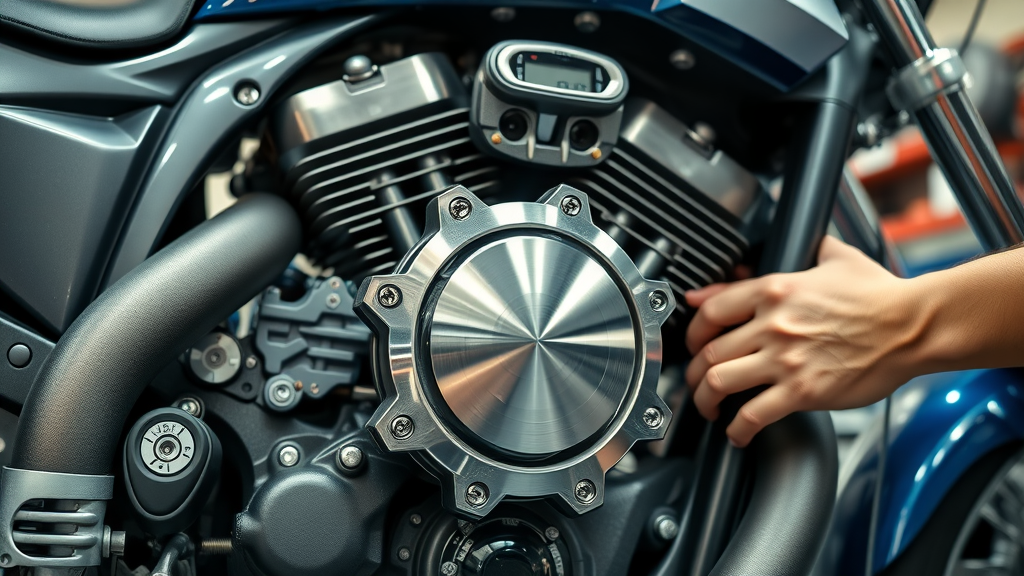
The Essentials of Motorcycle Engine Tuning Every Rider Must Know
Understanding the Role of Motorcycle Tuning in Engine Health
Motorcycle tuning isn’t just about boosting numbers—it’s the heart of your engine’s long-term health. Precise adjustments to the fuel table , air filter , and spark plug settings prevent your bike from running lean (too much air, not enough fuel) or running rich (too much fuel, not enough air). Either extreme can quickly lead to engine damage . Proper tuning ensures your engine oil and control units are working together to keep the engine running smoothly and reliably. For example, replacing old spark plugs and cleaning the air filter as part of regular maintenance can improve throttle response and volumetric efficiency , making your bike both quicker and safer.
Not only does good tuning extend the life of major engine components, but it also impacts fuel consumption and emissions. The harmony between the fuel ratio , ignition timing, and other engine parameters is what keeps modern motorcycle engines operating within factory-recommended tolerances—preventing costly repairs while maximizing everyday riding pleasure. Riders who overlook regular motorcycle tune -ups often encounter avoidable issues like hard starting, poor power output , or excess smoke from the exhaust system .
Ultimately, understanding the role of tuning upfront can save you money, time, and frustration. Not only does it preserve the machine you love, but it upgrades your entire riding experience —turning every journey into an opportunity for optimal performance.
Core Principles Behind Effective Motorcycle Engine Tuning
The core principles that underpin effective motorcycle engine tuning are incredibly simple, yet often misunderstood. The process starts by dialing in the correct fuel ratio (the balance between air and fuel entering the engine). This single adjustment can dictate whether your motorcycle is operating at peak performance or at risk for engine damage . Tweaking the ignition timing —when the spark occurs relative to the piston’s position—also plays a critical role. Timing the ignition “just right” makes the engine run smoother , boosts power output , and can extend the engine’s life.
Another principle is the balance of power, reliability, and fuel efficiency . Every change—whether adjusting the carburetor screws on older bikes, or reprogramming a modern ECU—should move you toward your specific goals, while always maintaining a safe margin for engine health . Using digital control units and modern diagnostic software can help you see the effect of each adjustment, reducing guesswork and providing a more scientific approach to tuning.
Importantly, consistent attention to even the smallest details—like using premium engine oil , frequently monitoring spark plugs , and verifying brake fluid —is what distinguishes a casual tune from a professional-grade performance transformation. Stick to the proven principles, and every ride will feel sharper, more responsive, and more reliable.
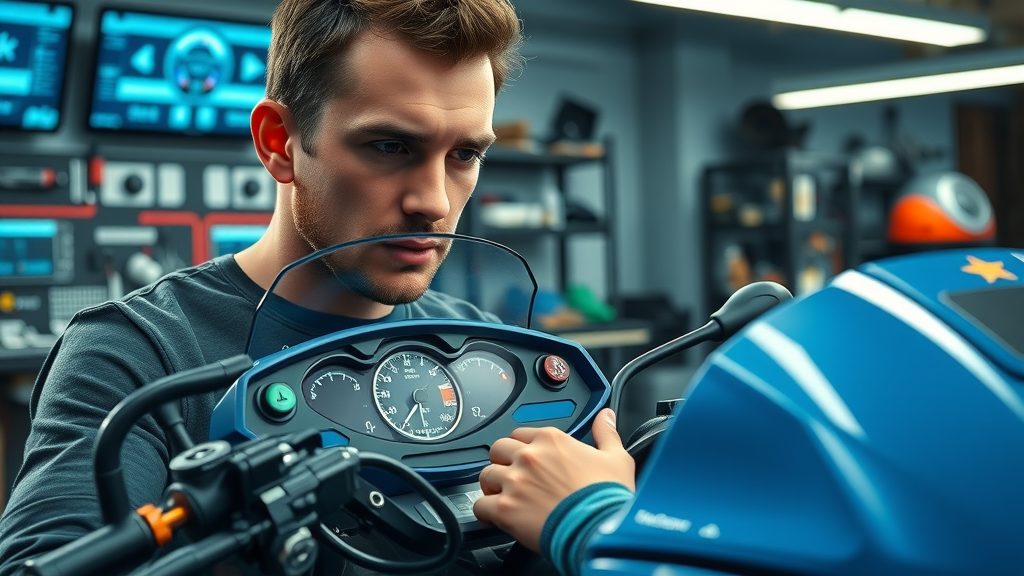
The Tuning Process: Step-by-Step Guide
The tuning process for motorcycles has evolved into a precise sequence. It typically begins with establishing a baseline—testing current engine performance using dyno runs and reviewing factory fuel tables . Next, inspect and replace key parts: air filters for unrestricted airflow and spark plugs for consistent ignition.
With a clean slate, the actual tuning begins. Using tools like the power commander or ECU flash software, adjustments are made to the air mixture , fuel ratio , and ignition timing . After each change, it’s important to monitor results using live data (via diagnostic software or dyno graphs). This scientific approach helps you see improvements in power output , throttle response , and fuel economy immediately.
Finally, one or more road tests ensure that these adjustments make the engine run smoothly not only under laboratory conditions, but in the real world. The right motorcycle tune transforms every throttle twist, making your bike more responsive, efficient, and reliable across every ride.
Dyno Tuning: The Gold Standard for Motorcycle Engine Optimization
How Dyno Tuning Refines Motorcycle Engine Performance
Dyno tuning is often celebrated as the gold standard in motorcycle engine tuning . Using rollers and sensors, a dynamometer precisely measures horsepower, torque, air-fuel ratio, and other vital parameters while the engine is run under load. These measurements reveal the subtle ways your motorcycle’s engine is performing under real-world conditions, highlighting exactly where improvements are needed.
By analyzing the data—air mixture, fuel ratio , throttle response , and even exhaust emissions—technicians can make micro-adjustments to ensure the engine is neither running lean nor too rich. This process addresses issues before they cause engine damage, and tunes the bike for peak performance specific to your needs, whether for more speed or increased fuel economy .
The end result is a dramatic improvement in overall rideability, enhanced reliability, and, crucially, a quantifiable increase in power output as verified by on-screen dyno graphs.
Comprehensive Walkthrough: Motorcycle Tuning Using a Dyno
A professional dyno tuning session follows an established workflow. First, the motorcycle is secured onto the dyno, and all engines, tire pressures, and fluids (like engine oil and brake fluid ) are checked. The technician starts with a “baseline” run, recording current power, torque, and fuel ratio .
Adjustments are made using the bike’s ECU, aftermarket power commander , or other programmable control units. After each set of changes, the bike is run again on the dyno, and the results are compared to previous runs. This loop continues until the optimal blend of horsepower , fuel efficiency , and throttle response is achieved.
A final set of diagnostic checks confirms the reliability and safety of the new setup. Riders are often given a printout, showing before-and-after dyno graphs—the clearest proof of their bike’s new enhanced performance due to advanced motorcycle tuning .
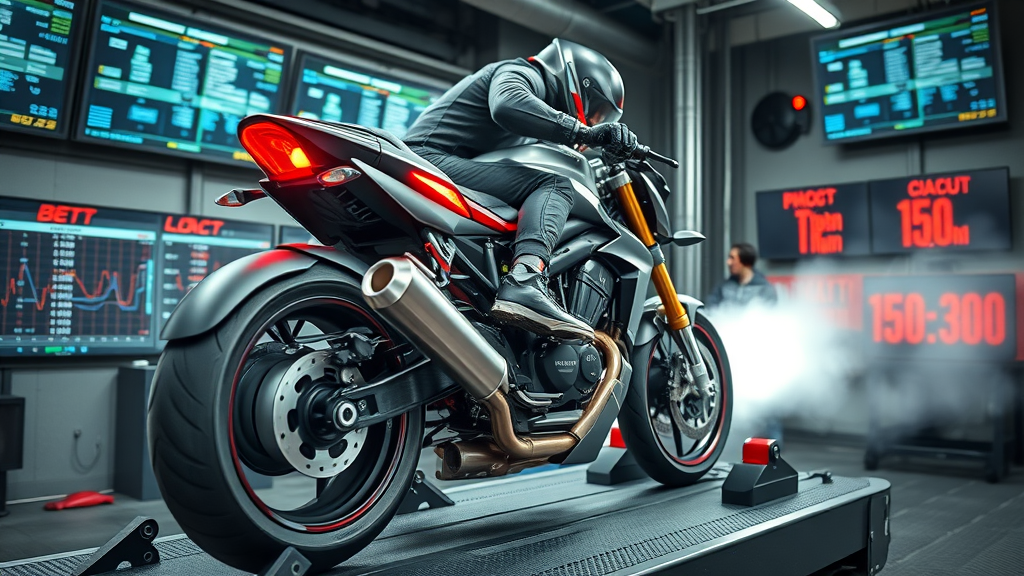
Dyno Tuning vs. Traditional Motorcycle Tune Methods
Traditional motorcycle tuning relied heavily on seat-of-the-pants feel, plug chops, and basic adjustments to carburetors or air screws. While this could yield fair results, especially for older models, it lacks the scientific accuracy of dyno tuning. Dyno tuning, on the other hand, supplies real-time data and removes much of the guesswork. This results in finer calibrations of air-fuel ratio, timing, and other engine parameters —all while avoiding the risk of inadvertently running lean or causing undue engine wear.
By showing a side-by-side comparison of both methods (see table below), it’s clear that dyno tuning not only produces greater power output and smoother throttle response , but it’s also safer for your engine over time.
|
|
|
Comparison Table: Dyno Tuning Outcomes vs Traditional Methods |
|
Aspect |
Dyno Tuning |
Traditional Methods |
|---|---|---|
|
Measurement Accuracy |
Highly accurate, real-time data on power, air-fuel ratio, and torque |
Estimates; less precise adjustments |
|
Result Consistency |
Repeatable, verifiable results using graphs and logs |
Variable, often subject to rider's perception |
|
Risk Management |
Reduces risk of running lean or rich, lowers engine damage risks |
Higher risk for improper tuning and resulting engine issues |
|
Power Output |
Optimized and measured for peak performance |
May miss true peak power band |
|
Cost/Complexity |
Requires specialized equipment and expertise |
DIY friendly, but limited |
Customizing Your Motorcycle Tune for Specific Riding Goals
Adapting Motorcycle Engine Tuning for Street, Track, and Adventure Use
Every rider’s ideal motorcycle tune depends on how and where they ride. For street bikes , tuning often focuses on smooth throttle response , optimal fuel efficiency , and ease in stop-and-go traffic. A well-balanced fuel ratio and moderate ignition timing make for a reliable commute and minimal engine damage risk.
Track riders need maximum power output at high RPMs. Here, the motorcycle engine is tuned aggressively, often running closer to the edge of safety limits, with priority on instant throttle reaction and high speed stability. For adventure riding or off-road use, tuning may focus on a wider torque band and robust reliability above outright power, as conditions can change rapidly.
Regardless of style, the goal is always to match the tuning process to specific riding goals—ensuring a ride that’s not just fast but also safe and tailored for your ultimate experience on two wheels.
Balancing Power, Fuel Efficiency, and Reliability through Tuning
Professional and DIY tuners alike must strike a balance between raw power, long-term reliability, and fuel economy . Aggressive tuning can yield impressive results on the dyno, but excessive focus on numbers could compromise engine health over time. Careful, incremental adjustments to spark plug heat ranges, air mixture , and ignition timing can unlock enhanced performance while still ensuring the bike runs smoothly.
Utilizing tools like diagnostic software and electronic control units (ECU), tuners can closely track each change’s impact on engine parameters . Fine-tuning the fuel tables (whether for a power commander or a flashed ECU) helps maximize volumetric efficiency and fuel burn, allowing you to get the most out of every drop of gas.
Ultimately, the best motorcycle tuning plan is the one that delivers optimal performance for your intended use, without sacrificing reliability or safety, ensuring your bike keeps running strong season after season.
Essential Tools and Technologies for Motorcycle Engine Tuning
Popular Tools: Power Commander and More
Power Commander is a household name among motorcycle tuning tools. This piggyback ECU device plugs into your bike’s factory wiring and provides precise, on-the-fly adjustments to the fuel ratio and ignition timing . Paired with a computer or dedicated interface, it lets tuners create multiple fuel maps for different conditions, putting serious control in your hands. Other popular tools include wideband oxygen sensors, handheld diagnostic terminals, and special spark plug testers—all designed to make the tuning process more predictable and less stressful.
While a power commander is incredibly effective for bikes with fuel injection, carbureted motorcycles can benefit from modern carb synchronizers and vacuum gauges. Top-tier tuners will also utilize digital advance and timing lights to ensure ignition timing is set accurately, adding another safeguard against engine damage .
An organized bench full of these tools not only streamlines your workflow but dramatically reduces trial and error, helping you achieve consistent, safe, and repeatable optimal results .
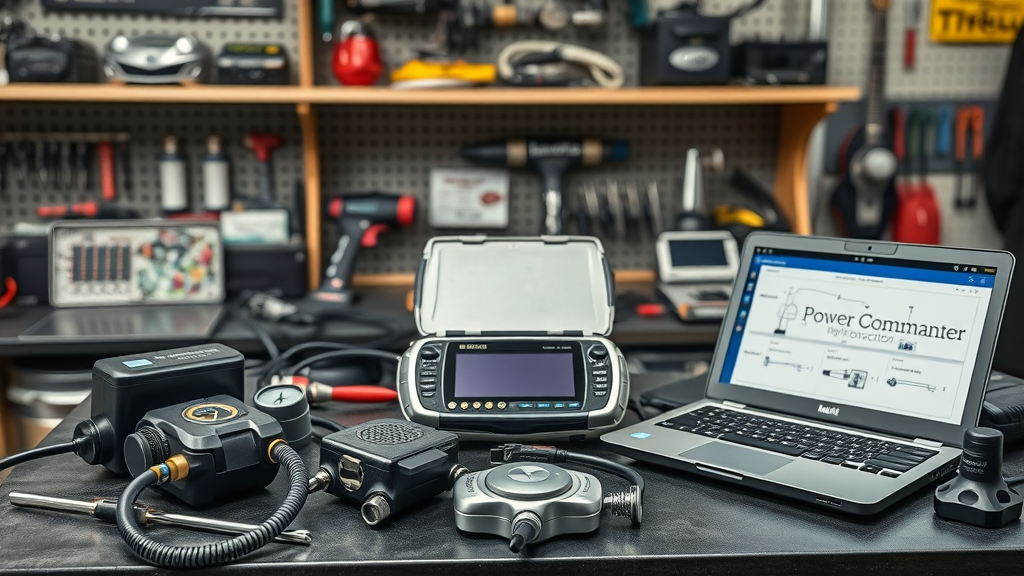
Diagnostic Software Essentials for an Optimal Motorcycle Tune
Today’s most successful motorcycle engine tuning projects rely heavily on diagnostic software. These programs let tuners read error codes, track live sensor data, and adjust parameters with a few clicks. Favorites include Dynojet Power Core, Woolich Racing, and TuneECU—each compatible with specific bike brands and engine control units.
The benefit is two-fold: accurate, real-time data that makes it easy to spot issues (like a faulty air filter or running lean ), and permanent logs that track how each tuning process change affects performance over time. With diagnostic software, you’re able to avoid guesswork, save money on unnecessary parts, and dial in a true custom motorcycle tune for your unique needs.
In short, investing in quality software and learning to interpret its feedback is just as crucial as the physical adjustments you make to your bike.
"A power commander isn't just a nice-to-have—it's a must-have for precision motorcycle engine tuning."
DIY vs. Professional Motorcycle Tuning: Which Approach Delivers Best Results?
Pros and Cons of Self-Tuning Your Motorcycle Engine
Many riders are tempted by the DIY approach to motorcycle tuning , thanks in part to affordable tools and a wealth of online resources. Doing it yourself offers a sense of accomplishment and can save money on labor. With patience and research, major improvements in fuel economy, throttle response, and even power output are achievable for the mechanically inclined. However, risks include making improper adjustments that can result in running the engine too lean or too rich—leading to engine damage or worse. Not all problems are easy to spot, and some tools, such as professional-grade dynos, are expensive or out of reach.
Another potential downside is the steep learning curve. Interpreting data from diagnostic tools or knowing when to replace a spark plug versus adjust a fuel table takes experience. In some cases, DIY tuning can result in inconsistent or suboptimal results, causing the bike to feel worse, not better.
Advantages of Pro Dyno Tuning and Expert Motorcycle Tune Services
Professional tuners—especially those offering dyno tuning —bring years of experience and advanced equipment to the table. The immediate benefit is accuracy: real-time power curves, proven safe adjustment steps, and a clear understanding of each bike’s characteristics. They can identify and fix issues that DIYers might miss, ensuring the motorcycle runs both smoothly and safely at peak performance .
Another key advantage is time. Professional tuning services are efficient, often finishing comprehensive tuning processes in a single afternoon. They also offer follow-up support, ensuring the new setup continues to deliver optimal performance as conditions change.
If you want reliable gains and minimal risk of costly mistakes, an expert motorcycle tune by a professional shop equipped with a dyno is simply unbeatable for optimal results.
|
|
|
DIY vs. Pro Motorcycle Engine Tuning: Key Differences |
|
Factor |
DIY Tuning |
Professional Dyno Tuning |
|---|---|---|
|
Cost |
Lower upfront; potential for errors |
Higher upfront; more accurate, fewer mistakes |
|
Technical Skills Needed |
High; must learn tuning fundamentals |
Handled by certified experts |
|
Results Consistency |
Variable; risk of over/under tuning |
Repeatable and reliable |
|
Equipment |
Basic tools, possibly no dyno |
Includes dyno, advanced diagnostics |
|
Support |
Online forums; self-research |
Expert advice; ongoing support |
Common Myths and Mistakes in Motorcycle Engine Tuning
-
Myth: “Any increase in power is good.” Reality: Excess power from improper tuning often leads to engine damage or reduced reliability.
-
Myth: “Once tuned, always tuned.” Reality: Regular maintenance is key— air filter , spark plugs , and fluids need frequent checks to maintain performance.
-
Myth: “Plug-and-play devices are always safe.” Reality: Without proper fuel table and air mixture adjustments, even the best power commander can be misused.
-
Myth: “DIY tuning is always cheaper.” Reality: Costly mistakes from incorrect adjustments can far exceed professional tuning fees.
Video Walkthrough: Live Motorcycle Engine Tuning Session
People Also Ask: Expert Answers to Top Motorcycle Engine Tuning Questions
Can you tune a motorcycle engine?
Yes! Motorcycle engine tuning involves adjusting the fuel and ignition systems to boost performance, efficiency, and reliability, often using specialized tools like dyno tuning platforms and tuning software. Whether you ride a carbureted classic or a fuel-injected modern bike, tuning maximizes your engine's potential.
Is it worth tuning a motorcycle?
Tuning a motorcycle is highly worthwhile for riders interested in increased horsepower, smoother throttle response , and tailored engine behavior for their specific riding style or conditions. Proper tuning also fosters better fuel economy and can extend the lifespan of your motorcycle engine .
What does tuning a motorcycle do?
Motorcycle tuning optimizes air-fuel ratio , ignition timing , and other engine parameters to maximize power output , rideability, and sometimes even longevity. Small changes—like switching out the air filter or recalibrating the ECU —make a noticeable difference in how your bike accelerates and handles.
How to increase the horsepower of a motorcycle?
Boosting horsepower involves targeted motorcycle tuning—using dyno tuning , a power commander or similar device, upgrading the exhaust system , and adjusting the fuel injection or carburetor for the ideal air-fuel ratio. Professional tuning ensures these upgrades deliver maximum performance safely.
Advanced Tuning Process: Tips for Achieving Peak Motorcycle Engine Power
-
Record your baseline dyno data before any adjustments.
-
Replace the air filter and regularly inspect spark plugs for signs of wear.
-
Use high-quality engine oil to keep your motorcycle engine running smoothly.
-
Monitor fuel economy as an indicator of tuning success.
-
Make adjustments incrementally and test each change for optimal performance .
-
Don’t overlook the impact of an upgraded exhaust system on air flow and back pressure.
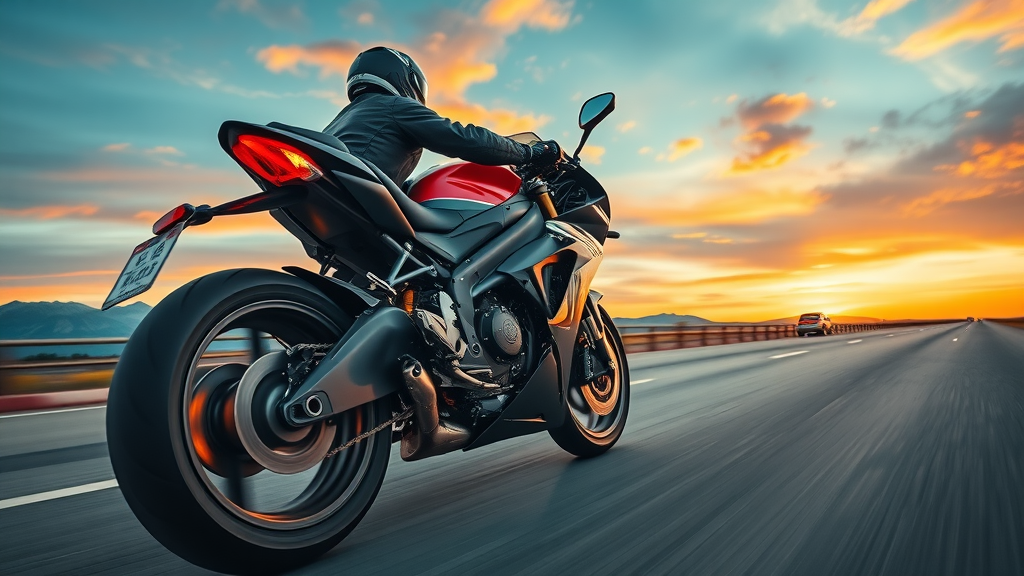
Maximizing Longevity: Maintaining and Monitoring Your Tuned Motorcycle Engine
How to Keep Your Motorcycle Tune in Top Condition
Consistent regular maintenance is the unsung hero of motorcycle engine tuning . Change the engine oil at manufacturer-recommended intervals, keep your air filter clean, and watch for irregularities in spark plugs or brake fluid levels. These small steps prevent dangerous issues—like the engine running lean or overheating—and ensure your carefully tailored motorcycle tune remains effective over time.
Make it a habit to periodically log your riding data with diagnostic tools. This proactive approach helps catch small problems before they become expensive repairs, and helps maintain peak performance from season to season.
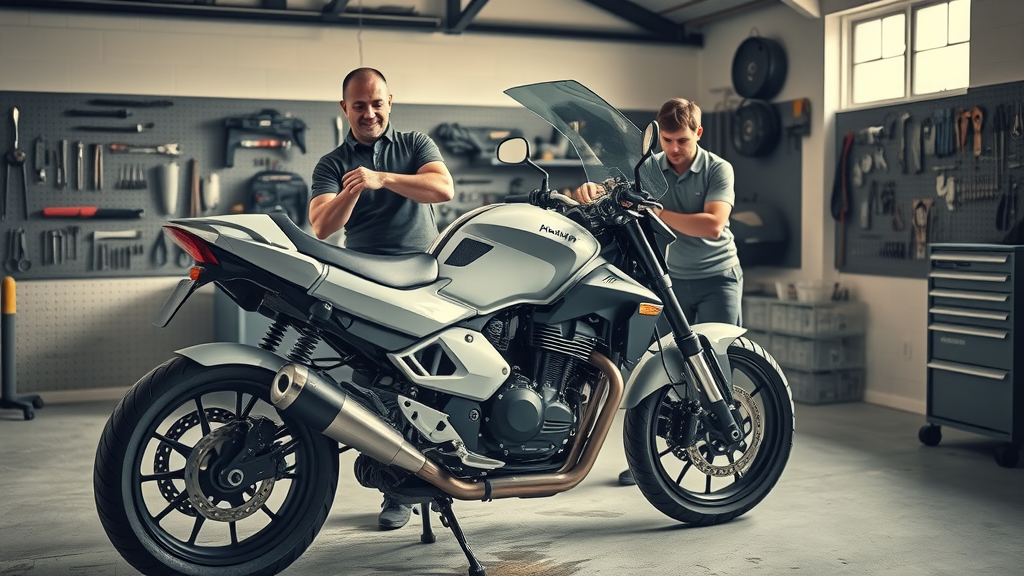
Troubleshooting Common Post-Tuning Engine Issues
Even after the perfect motorcycle tune , occasional hiccups are possible. If you notice surging, “dead spots” in throttle response, or erratic idle, double-check your fuel ratio using a wideband sensor and verify that all connectors and wires are seated properly. Often, issues like running lean can be resolved by minor adjustments to the fuel table or air screws.
Pay special attention to any new noises, vibrations, or excess heat. These could be signs of improper ignition timing or a failing spark plug . Addressing minor post-tuning issues quickly preserves both the performance and longevity of your motorcycle engine .
Frequently Asked Questions on Motorcycle Engine Tuning
-
What’s the ideal interval for a motorcycle tune?
Most experts recommend a professional tune or dyno session every 6,000-10,000 miles, or any time you change major components like the exhaust or intake. -
Will a power commander void my warranty?
Many manufacturers won’t void your entire warranty, but modifications to the engine or control units might not be covered. Always check with your dealer. -
What are signs that my bike needs tuning?
Poor throttle response, backfiring, reduced fuel economy, or flat acceleration are all signals your motorcycle engine could benefit from a fresh tune. -
Is dyno tuning safe for older motorcycles?
Yes, but it’s important to check the overall mechanical health— engine oil , spark plugs , and cooling system—before strapping a vintage bike on the dyno.
Get the Most out of Your Motorcycle: Expert Motorcycle Engine Tuning for Lasting Results
"For true riding enthusiasts, professionally tuned motorcycle engines aren’t just about power—they’re about unlocking your bike's full potential."
Ready for Peak Performance? Connect with Our Motorcycle Engine Tuning Experts
Call Us Today: 847-458-4858 for a Consultation on Motorcycle Tuning and Dyno Tuning
Achieve peak performance and reliability by trusting your motorcycle engine tuning to experienced experts. For the safest, most powerful ride possible—don’t settle for factory settings. Call us now at 847-458-4858 and schedule your dyno session.
Don’t just ride— experience your motorcycle’s full potential by investing in thorough, professional engine tuning and regular maintenance for unmatched performance every time you hit the road.
Enhancing your motorcycle’s performance through engine tuning can lead to significant improvements in power, fuel efficiency, and overall ride quality. For a comprehensive understanding of these benefits, consider exploring the article “ 8 Reasons Motorcycle Dyno Tuning Boosts Your Riding Experience ,” which delves into how dyno tuning can elevate your riding experience by optimizing engine output and responsiveness. Additionally, “ The Benefits of Precision Tuning for Motorcycle Enthusiasts ” offers insights into how fine-tuning your bike can enhance speed, responsiveness, and fuel efficiency, providing a more personalized and enjoyable ride. If you’re serious about unlocking your motorcycle’s full potential, these resources will provide valuable guidance on achieving peak performance through expert tuning techniques.
 Add Row
Add Row  Add
Add 

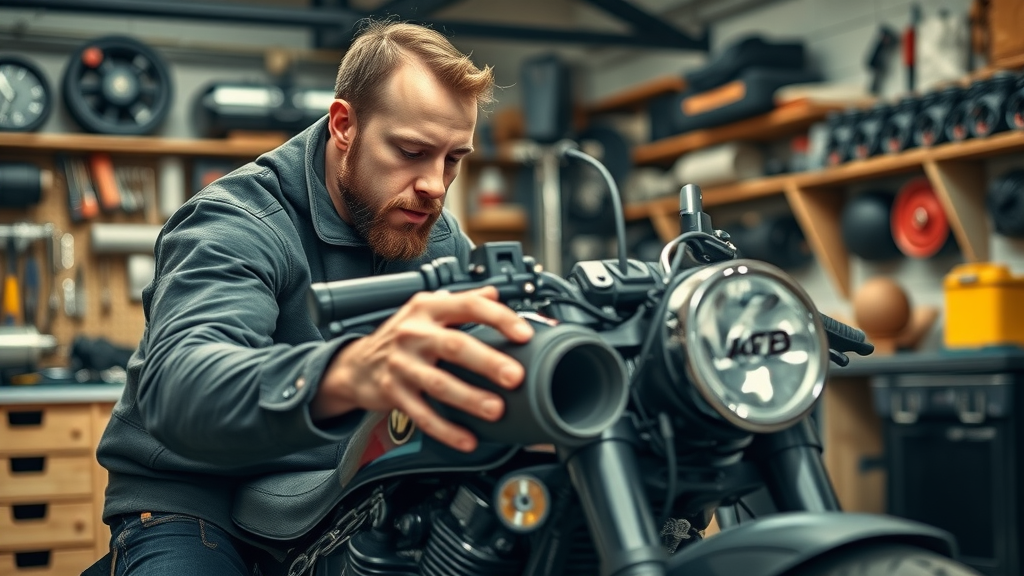
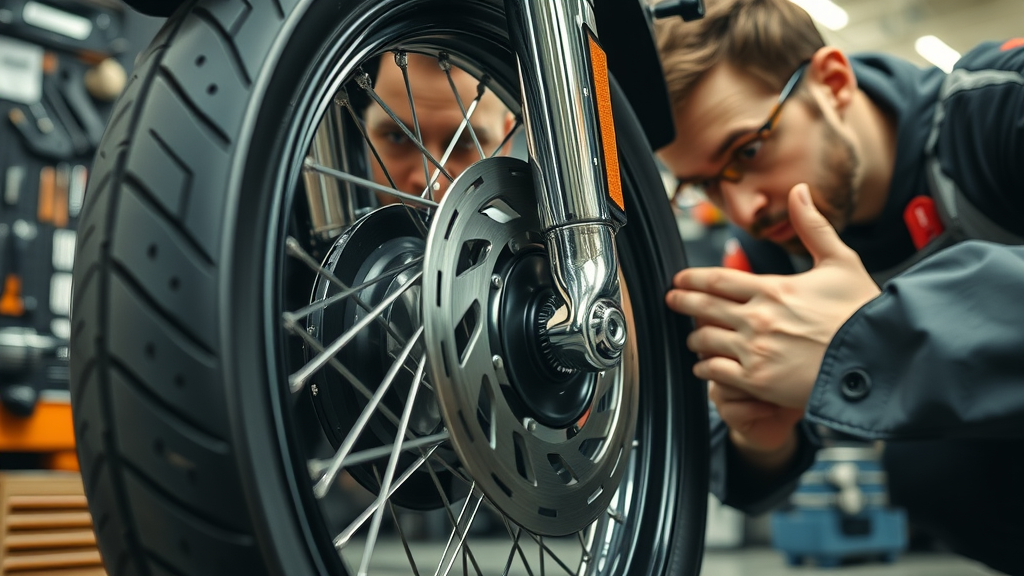
Write A Comment